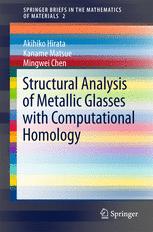

Most ebook files are in PDF format, so you can easily read them using various software such as Foxit Reader or directly on the Google Chrome browser.
Some ebook files are released by publishers in other formats such as .awz, .mobi, .epub, .fb2, etc. You may need to install specific software to read these formats on mobile/PC, such as Calibre.
Please read the tutorial at this link: https://ebookbell.com/faq
We offer FREE conversion to the popular formats you request; however, this may take some time. Therefore, right after payment, please email us, and we will try to provide the service as quickly as possible.
For some exceptional file formats or broken links (if any), please refrain from opening any disputes. Instead, email us first, and we will try to assist within a maximum of 6 hours.
EbookBell Team

0.0
0 reviewsThis book introduces the application of computational homology for structural analysis of metallic glasses. Metallic glasses, relatively new materials in the field of metals, are the next-generation structural and functional materials owing to their excellent properties. To understand their properties and to develop novel metallic glass materials, it is necessary to uncover their atomic structures which have no periodicity, unlike crystals. Although many experimental and simulation studies have been performed to reveal the structures, it is extremely difficult to perceive a relationship between structures and properties without an appropriate point of view, or language. The purpose here is to show how a new approach using computational homology gives a useful insight into the interpretation of atomic structures. It is noted that computational homology has rapidly developed and is now widely applied for various data analyses. The book begins with a brief basic survey of metallic glasses and computational homology, then goes on to the detailed procedures and interpretation of computational homology analysis for metallic glasses. Understandable and readable information for both materials scientists and mathematicians is also provided.